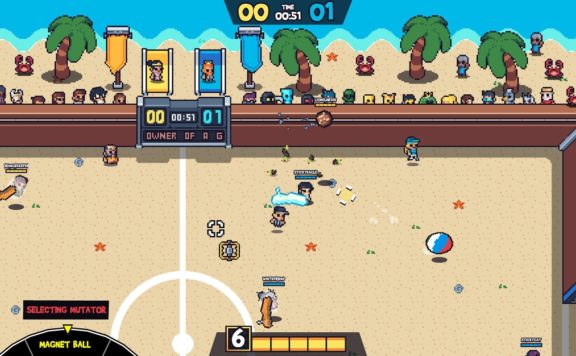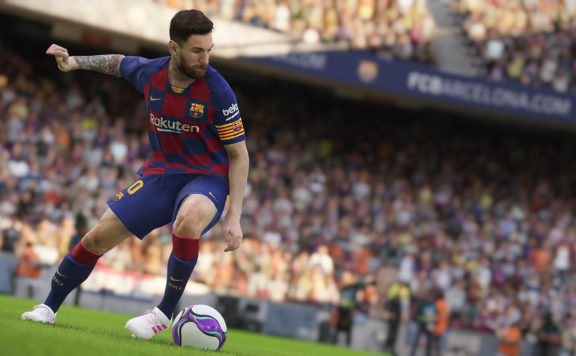Football is one of the most cherished sports globally, boasting over 3.5 billion fans. Prominent players comment on global news publications, participate in TV shows, and participate in various media activities. To add more vibrancy to such broadcasts, clubs now use technology and virtual studio background videos, making football even more engaging.
This article delves into how popular football teams leverage technology to offer people unforgettable visual experiences worldwide while safeguarding athletes from injuries. Keep reading to learn more about how cutting-edge technologies transform how football is played and experienced today.
Impressive technologies in Brazilian football
The Brazil national football team is the strongest in the world. This nation has clinched victory in the FIFA World Cup a remarkable five times, achieving this feat in 1958, 1962, 1970, 1994, and 2002. Presently, this stands as an unbeaten record. Brazil also has witnessed some of the world’s most eminent football figures gracing the field, including legends like Pelé, Ronaldo, and Ronaldinho.
Considering that technology in football is indispensable now, having a strong team is no longer sufficient. That’s why Brazilian clubs actively invest in tech solutions to assist players in enhancing their performance, refining strategies, and for engaging more fans.

FAQ: What technologies are most used in sports?
The most used technologies in sports are data analytics, the Internet of Things (IoT), Virtual Reality (VR), Augmented Reality (AR), and Video Assistant Referee (VAR). They can be used for various purposes. For example, IoT devices can collect data about a player’s performance and convey this information to data analytics software to enhance gaming strategies. VR and AR are good solutions for training and fan engagement, while referees utilize VAR for fair judgment.
FAQ: When did the use of technology in sports emerge?
The first technological advancements began in athletics in the 1960s when automated timing systems with photo-finish mechanisms were implemented. This advancement is used to objectively measure the time athletes take to complete a competition, for example, in swimming or horse racing.
#1 GPS tracking for monitoring workload and preventing injuries
Football carries inherent injury risks. To mitigate them, wearable devices like GPS trackers are a valuable tool. Such solutions continually collect data at hundreds of measurements per second. For example, the overall distance covered, acceleration frequency, heart rate, etc. According to The Economist, this technology is used by the Brazilian team to prescribe possible training workloads for each member.
GPS tracking can also be used to predict possible injuries on the football field. Backed by the University of Birmingham and Southampton Football Club research, the Daily Mail states that wearable devices can predict harmful situations before they happen. This is because of the strong correlation between traumas and physical activity.
For example, in 2023, the Brazilian Football Confederation purchased monitoring devices in anticipation of the summer World Cup. The CBF’s teams were equipped with the APEX Team Series GPS gadgets to analyze their physical attributes and provide insights into player load, fatigue levels, and injury risk.
FAQ: How has technology changed sport?
Thanks to technology, sports professionals can now easily diagnose possible injuries, improve performance, and become better at engaging fans. It also allows referees to track violations during matches.
#2 Data analytics and scouting
Data analytics is a valuable technology in sports since it allows trainers to analyze game performance and mistakes. Besides, if machine learning algorithms power such solutions, they can even detect potential football talents. Vast datasets are used to identify athletes’ capabilities and potentials. Machine learning algorithms scrutinize numerous aspects of a player’s performance, from their on-field statistics to playing style.
In 2023, Santos FC requested football player data-scouting software from TransferLab. This system utilizes data from 120,000 players from different leagues to analyze each footballer’s performance and predict future results.
#3 Virtual reality for fan engagement

Virtual reality is one of the biggest football takeoffs because it can enhance the game and make it more engaging. One of the most obvious application scopes is training, where footballers can conduct trial game sessions in real-life conditions. But that’s not all—Brazilian clubs also utilize this advancement to engage more fans.
In 2021, Clube Atlético Mineiro, in collaboration with ImagineAR, introduced a fan-centric mobile application featuring augmented reality. This innovative application allowed fans to take photos and record videos with their football idols.
Common video technologies used in football sport
Just as the soccer ball has evolved over time, innovative technological solutions for sports keep emerging in the market. But football has a long history of employing advanced practices to evaluate game performance.
Among well-known football technologies are:
- Video Assistant Referee (VAR). This computer assistant helps referees make critical decisions during matches. For example, to judge fairly in contentious situations like offside calls, fouls, and penalties.
- Goal-line technology. It is used to eliminate the uncertainty of a scored goal. With cameras, referees can track when the ball has crossed the goal line.
- Instant replay. This football technology is designed for fans, allowing them to review key game moments from multiple angles. Instant replay is also useful for referrers and game analysts.
- Player performance analysis. With wearables and tracking devices, trainers can gain insights about a player’s performance, like sprint speeds and ball possessions. This information is used during a game to make tactical decisions.
- Injury assessment. Using wearable devices, medical staff can track vital signs and identify potential issues on the field.

FAQ: What is the latest technology in football?
The latest football solution is semi-automated offside technology, announced by FIFA in 2022. It assists video match officials and on-field referees, enabling quicker, more consistent, and highly precise offside judgments. The latest technology employs 12 specialized tracking cameras discreetly installed beneath the stadium’s roof. They monitor the ball’s trajectory and capture up to 29 data points for each player—at a remarkable rate of 50 times per second. These 29 data points encompass all relevant limbs and extremities crucial for precise offside determinations.
Wrapping up
Technology is swiftly weaving its way into football to make it more engaging. For example, it facilitates improvements in athletes’ physical performance, ensures their safety, and adds even more color to the experience of watching a match.






